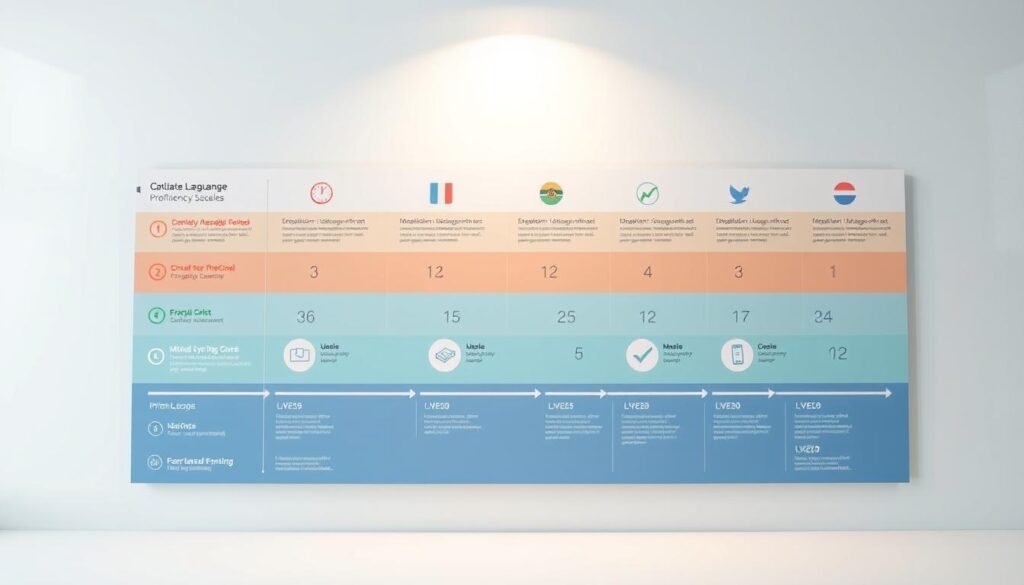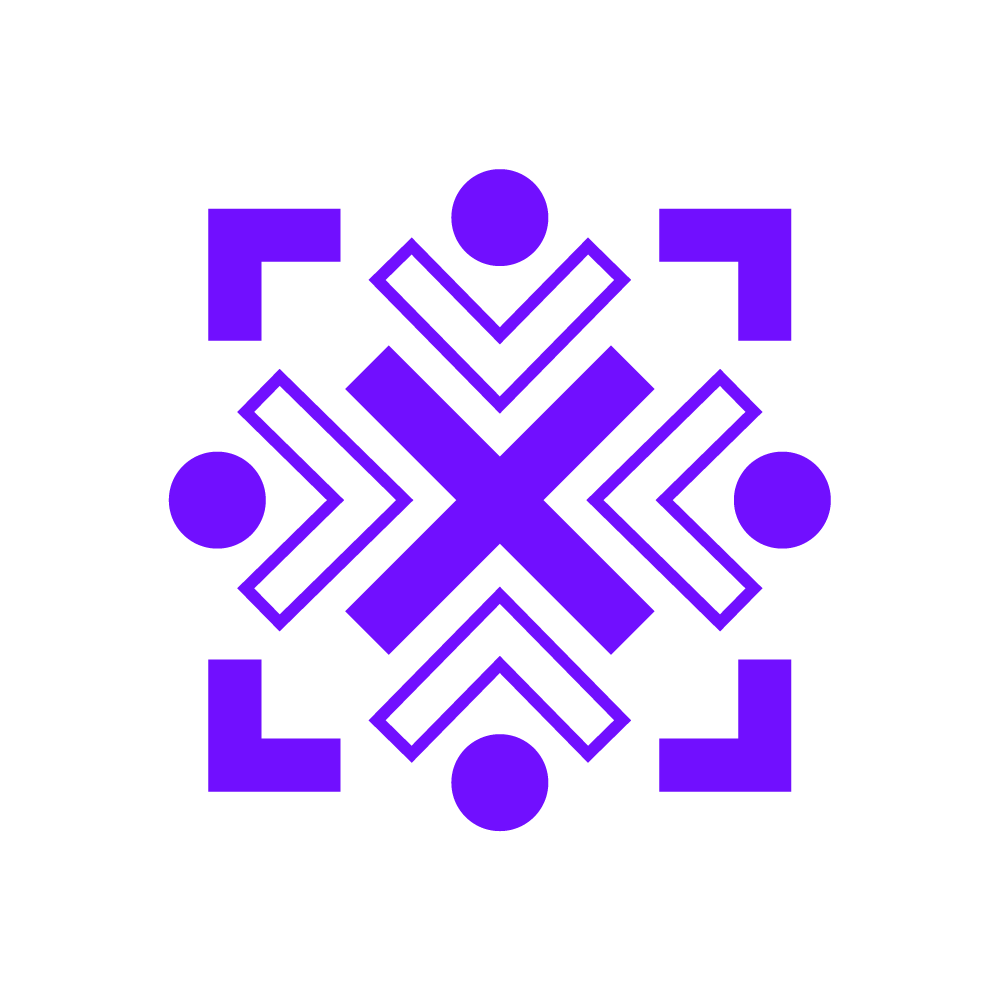Ever wondered why some people master a new language in months while others struggle for years? The answer isn’t just about time—it’s about strategy, dedication, and understanding the variables at play.
Fluency timelines vary widely. For example, Spanish might require around 400 hours of study, while Mandarin could demand over 2,200. The gap depends on factors like linguistic similarity, daily practice, and learning methods.
Your goals matter too. Conversational fluency takes less time than professional proficiency. Whether you’re learning for travel, work, or personal growth, setting realistic expectations keeps motivation high.
Key Takeaways
- Fluency ranges from 400 to 2,200 hours based on language difficulty.
- Spanish and French are quicker to learn than Mandarin or Arabic.
- Daily practice accelerates progress more than sporadic study.
- Immersion and structured programs boost efficiency.
- Clear goals help tailor the learning process to your needs.
Introduction: Understanding Language Learning Timelines
Mastering a new language sparks excitement but often comes with early frustrations. Many beginners struggle with grammar rules or retaining vocabulary. These hurdles are normal—progress accelerates with consistent practice and the right strategies.
Intensive study, like the FSI’s recommended 4 hours daily, can achieve conversational Spanish in 100 days. Casual learners dedicating 30 minutes daily may need years for similar results. Your approach shapes the timeline.

Proficiency scales like CEFR (A1–C2) and ILR (0–5) measure fluency objectively. For instance, reaching B2 (independent fluency) typically requires 500–600 hours for Category 1 languages like French.
The FSI categorizes languages by difficulty, estimating 575–2,200 hours to reach professional working proficiency. Individual factors—prior experience, immersion, or motivation—further influence your unique journey.
Set realistic expectations. A traveler aiming for basic phrases needs fewer hours than a professional mastering technical terms. Tailor your study process to align with personal goals.
How Long Does It Take to Learn a Language? Key Factors
The journey to fluency depends on multiple interconnected factors. Your target language, study habits, and even mindset play pivotal roles. Understanding these variables helps tailor a strategy that fits your goals.

The Language You Choose
Linguistic proximity speeds up learning. English speakers grasp Spanish 30% faster than Japanese due to shared vocabulary and grammar structures. For example, “hospital” (Spanish) vs. “病院” (Japanese) shows cognate advantages.
Your Proficiency Goals
Tourist-level conversation (A2) may take 200 hours, while professional proficiency (B2+) demands 500+. Define clear milestones—like ordering food vs. negotiating contracts—to gauge progress.
Motivation and Mindset
A growth mindset fuels consistency. Viewing mistakes as learning opportunities, not failures, sustains momentum. Apps like Tandem connect you with native speakers for real-world practice.
Background in Other Languages
Prior experience with related languages unlocks cognate recognition. For instance, French learners spot similarities in Italian, reducing study time. Multilingual brains adapt quicker to new patterns.
Learning Methods and Tools
Immersive tools like LingQ outperform traditional class settings by emphasizing context over rote memorization. The FSI recommends 4 hours daily for optimal results, blending structured lessons with active use.
Time Dedication
Daily 30-minute sessions yield slower results than intensive immersion. Consistency matters—15 minutes daily beats 5 hours weekly. Track hours to estimate milestones realistically.
How Long Does It Take to Learn a Language by Proficiency Level?
Breaking down language mastery into clear stages clarifies your path forward. The CEFR framework (A1–C2) and ILR scale (0–5) map progress from basic phrases to near-native fluency. Each level demands distinct skills and time investments.

Beginner (A1-A2)
A1 requires 60–80 hours for survival phrases like greetings or ordering food. At A2, you handle simple conversations (200+ hours). ILR 0–1 matches this, covering tourist needs.
Intermediate (B1-B2)
B1 unlocks discussions on familiar topics (300–400 hours). B2, the threshold for proficiency, lets you argue opinions (500–600 hours). ILR 2–3 aligns with workplace communication.
Advanced (C1-C2)
C1 users grasp nuanced texts (700–800 hours). C2, near-native fluency, involves technical documents (1,000+ hours). ILR 4–5 reflects government-level mastery.
Progression accelerates with immersion. A1 learners read menus; C2 learners analyze literature. Tailor goals to your needs—travelers thrive at A2, while professionals aim for B2+.
Language Categories and Estimated Learning Times
The Foreign Service Institute (FSI) classifies languages into five categories based on difficulty. This system helps learners gauge the effort required. For English speakers, Spanish falls into Category 1, while Mandarin sits in Category 5.
Category 1: Easier Languages (e.g., Spanish, French)
Category 1 includes Romance languages like Spanish and French. These share Latin roots with English, speeding up learning. The FSI estimates 575 hours to reach professional proficiency.
With consistent study, learners can achieve conversational fluency in 6 months. Focus on cognates—words like “animal” (Spanish) and “important” (French)—to accelerate progress.
Category 2-5: Increasing Difficulty (e.g., German, Mandarin, Arabic)
Category 2 (German) requires 750 hours due to complex grammar. Category 4 (Russian) jumps to 1,100 hours with its Cyrillic script. Category 5 (Mandarin, Arabic) demands 2,200 hours.
Tonal languages like Mandarin add another layer. Mispronouncing “mā” (mother) vs. “mà” (scold) changes meaning entirely. Logographic writing systems, such as Chinese characters, also slow initial progress.
Weekly Study Tips:
- Category 1: 10–15 hours/week for steady progress.
- Category 5: 20+ hours/week with immersive tools like Pimsleur.
Understanding Language Proficiency Scales
Not all fluency is equal—scales like CEFR and ILR prove it. These frameworks turn abstract skills into measurable milestones. Governments, schools, and employers rely on them to define mastery objectively.

The CEFR (Common European Framework) uses A1–C2 levels. A1 covers basics like greetings, while C2 demands nuanced grammar and cultural insight. For example, German universities often require B2 for admission.
The ILR (Interagency Language Roundtable) scale ranges from 0–5. A “3” indicates professional proficiency—enough to negotiate contracts. US diplomats need ILR 3+ in their target language.
Key Differences:
- CEFR is Europe-centric; ILR is US-government standard.
- B2 (CEFR) ≈ ILR 3 (“working knowledge”).
- C2 (CEFR) ≈ ILR 4–5 (near-native fluency).
For visas, Canada accepts CLB 7 (similar to CEFR B2). France requires A2 for residency. Always check which level your goal demands.
Conversion Chart:
| CEFR | ILR | Ability |
|---|---|---|
| A2 | 1 | Basic conversations |
| B1 | 2 | Casual workplace talk |
| C1 | 4 | Academic debates |
Tips to Accelerate Your Language Learning Journey
Breaking through plateaus requires smart strategies, not just time. Tools like LingQ simplify learn new language efforts by focusing on input-based learning. Their system adapts to your target language, using real-world content to boost retention.
Immersion programs, like Maximo Nivel’s Spanish courses, prove 70% of learning happens outside classrooms. Pair structured study with authentic experiences. For example, watch Netflix shows in your target language with subtitles.
Spaced repetition apps like Anki solidify vocabulary. Set daily goals—even 15 minutes of listening to podcasts counts. The Tandem app connects you with native speakers for real-time practice.
Intensive programs, such as Languages Abroad, compress years into months. LingQ’s multi-platform access lets you study anywhere. One learner reached B2 Spanish in 5 months using their tools abroad.
Start today. Mix methods—read news articles, write journal entries, and join local meetups. Consistency beats cramming every time.
Common Myths About Language Learning Time
Many language learners fall for misleading promises about quick mastery. Ads claiming “fluency in 30 days” ignore the reality: true fluency requires consistent effort over years.
Age isn’t a barrier. While children absorb languages faster, adults excel in structured learning. A well-designed course leverages cognitive strengths like pattern recognition.
Gamified apps like Duolingo build basic vocabulary but rarely advance users beyond A2. Only 5% achieve C2 proficiency through app-only study, according to linguistic research.
Plateaus around six months are normal. The answer? Shift tactics—try conversation exchanges or consuming native media. Immersion is the fastest way to push past stagnation.
Classrooms provide grammar foundations, but immersion cements skills. Studies show learners abroad progress 50% faster than those relying solely on textbooks.
Conclusion: Setting Realistic Language Learning Goals
Mastering a language learning journey is about progress, not perfection. With 87% of learners succeeding through structured plans, focus on steady improvement. The average 18-month timeline varies—your pace depends on consistency and methods.
Use the SMART framework for goals. Combine apps like Tandem with real conversations for balanced growth. A lifelong learning mindset turns challenges into milestones.
Start your process today. Whether through LingQ’s immersive tools or local meetups, every step counts. Progress is the real measure of success.
FAQ
What affects the time needed to master a new language?
Several factors influence fluency speed, including the language’s difficulty, your goals, motivation, prior experience, study methods, and daily practice.
Can I become fluent in three months?
While basic conversational skills are possible, true fluency typically requires longer. Intensive programs like those from Rosetta Stone or Babbel may accelerate progress.
How many hours should I dedicate weekly?
For steady progress, aim for 5-10 hours weekly. Apps like Duolingo or Pimsleur help structure shorter, consistent sessions effectively.
Do some languages take longer than others?
Yes. Spanish or French may take 600 hours for English speakers, while Mandarin or Arabic often require 2,200+ hours due to different writing systems and grammar rules.
What’s the fastest way to improve language skills?
Immersion—through travel, tutors (like on italki), or media consumption—boosts listening and speaking faster than classroom-only study.
How do I measure my proficiency level?
Use frameworks like CEFR (A1-C2) or take tests such as DELE for Spanish or HSK for Mandarin to assess reading, writing, speaking, and listening.
Can children learn faster than adults?
Kids often absorb pronunciation naturally, but adults excel in grammar comprehension. Tools like FluentU leverage this by combining videos with interactive lessons.
Is grammar or vocabulary more important early on?
Focus on high-frequency words first. Platforms like Memrise prioritize practical vocabulary, letting you communicate before mastering complex grammar.



